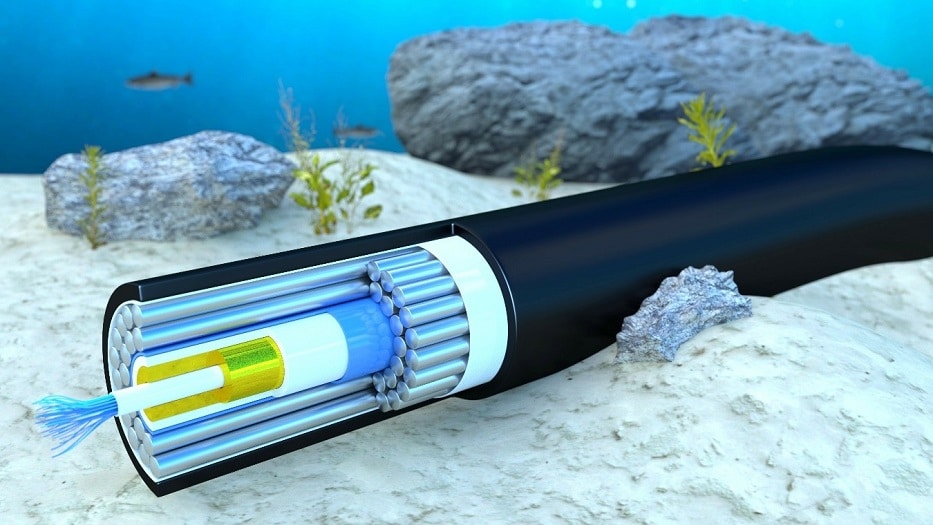Julia Maria Gomez de Avila Segade | 21/12/2022
In addition to supporting 99% of the world’s telecommunications, the submarine cable network has the potential to become a valuable tool in other essential areas, such as incident prevention or detection of extreme weather events.
Today’s telecommunications system would not be possible without the extensive fiber optic network linking it together, especially through submarine cables. 99% of telecommunications are made through them: main internet arteries and global connectivity. Today, more than 436 cables are operating under international waters, reaching a total length of about 808,000 miles. Its value in economic and social development is undeniable only with its ‘telco’ activity, but in recent years, other possible uses of these cables have also been investigated, which could help to preserve the environment, predict catastrophic events, and prevent risks in port infrastructures or coastal cities.
Seismic analysis
One of the first successful experiments in this area took place in Iceland, when a local company installed a submarine cable to bring fiber optics to a small region near Reykjavik. What for the citizens was a significant technological breakthrough that would improve the welfare state, for seismology experts it was an opportunity to conduct experiments on two volcanoes in the area. In the first of them, conducted in May 2021, a cable analyzed the activity of the most active volcano in the region, completely covered by a glacier.
The second, however, was examining an ongoing eruption, collecting some of the most complex and detailed data extracted in this way. Thanks to this starting point, experts in the field pointed out that this technology will be able to contribute not only to the monitoring of volcanoes, but also to the assessment of risks that may impact the natural environment or affect infrastructures and populations vulnerable to their eruptions.
Measurement challenges
These advances in the alternative use of submarine cables had a significant limitation: the range of the cables, as they operated as a single sensor. In the case of the Icelandic experiments, the measurements made it easy to ensure that the data collected were accurate enough to add relevance to their conclusions. The first test had an infrastructure that was 7.4 miles long and the second one was 2.4 miles long.
However, most of the cables comprising this submarine technology are measured in hundreds and thousands of miles. For example, Marea, which connects the Americas and Spain (linking Virginia with Bilbao), exceeds 3,728 miles in length, or Atlantis-2, which also connects through our country through Conil de la Frontera and links South America with Africa and Europe, measures approximately 7,456 miles.
The latest breakthrough achieved in this regard, based on an extensive study conducted by a team from the National Physical Laboratory (NPL), in the United Kingdom, and published in the prestigious journal Science, is to segment these infrastructures in order to perform a detailed analysis based on “small” sensors. This technology could considerably improve, without altering telecommunications, the observation of the seabed, from which seismic or volcanic monitoring can be performed, as well as an analysis of tides or ocean signals.
Mini sensors on very long submarine cables
The authors of this major breakthrough in the alternative use of submarine cables started from one premise: fiber optic-based detection technology could improve the observation of Earth by taking the immense lengths of cable that acted as sensors and dividing them into small repeaters of between 28 and 55 miles. By exploiting this infrastructure sensitivity, the analysis of the seabed would be much more detailed. In this way, and as revealed in a study published in May 2022, “the detection of earthquakes, microseisms, and ocean currents would be much better achieved by this technique based on interferometry”, which allows much sharper signals to be filtered out that might otherwise be scattered in the optical disturbance accumulated throughout the cable.
These same researchers claim that, currently, all intercontinental cables can be divided into these small sensorized fragments, and the number of sections would be limited only by their length, therefore, the value –and the amount— of data that could be collected is currently incalculable. Specifically, their experiment consisted of isolating individual detection segments in a 3,600-mile-long cable, with which they managed to detect several earthquakes in the Indonesian region. They claim that they could also serve as a warning system for climatic catastrophes such as tsunamis or as a tool to combat climate change, as they would analyze the oceans and submarine waters in a completely unprecedented way (temperatures, movements, sub-aquatic life, etc.).
This line of research, which could represent a paradigm shift in geotechnical and oceanic study, is preceded by small advances that have occurred in recent decades. In 2015, for example, a team of German researchers was able to take advantage of unused cables not only to detect distant earthquakes, but also to locate the hypocenter by measuring the impact times of seismic waves on small cable end bends. It was with celebrated seismologist Andreas Fichtner when, based on these investigations, the researchers turned to the study of icier lands and combined successes were achieved with active fiber optics in the studies of Iceland.
|
Scientific publications cited in this article… Optical interferometry–based array of seafloor environmental sensors using a transoceanic submarine cable. Science Journal. 05/19/2022 (Multiple authors). World Wide Web. Science Journal. 12/09/2021. Paul Voosen. |
Keep reading… Biojet: moving towards sustainable aviation





